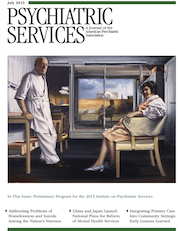CDC’s First Surveillance Report on Children’s Mental Health
Up to one in five U.S. children experiences a mental disorder each year, according to a new report from the Centers for Disease Control and Prevention (CDC), and only 21% of affected children get treatment. To estimate prevalence rates, the CDC compiled and analyzed 2005–2011 data for children age 3 to 17 years from several federal surveys and national databases. The result is CDC’s first comprehensive look at children’s mental health. Ruth Perou, Ph.D., child development studies team leader at the CDC and lead author of the report, said that the agency plans to continue updating these statistics and to present reports on adults' and children’s mental health issues more frequently.
The most prevalent mental illness among children age 3 to 17 was attention-deficit hyperactivity disorder (ADHD) (6.8%). ADHD was twice as prevalent as behavioral or conduct disorders (3.5%), according to the report. Other prevalent disorders were anxiety (3.0%), depression (2.1%), and autism spectrum disorder (1.1%). The CDC also compiled data on past-year substance use disorders among children age 12 to 17 and found that 4.2% had an alcohol use disorder in the prior year and 4.7% had an illicit drug use disorder. Prevalence rates for some disorders varied by race and ethnicity. The lowest rate of ADHD, for example, was found among Hispanic children, behavioral or conduct disorders were highest among black non-Hispanic children, and autism spectrum disorder was most prevalent among white non-Hispanic children.
The estimated annual cost to families and society is $247 billion, including costs of treatment, special education, juvenile justice, and decreased productivity, according to research cited in the report.
“Mental Health Surveillance Among Children—United States, 2005–2011” was published as a supplement to the CDC’s Morbidity and Mortality Weekly report (www.cdc.gov/mmwr/pdf/other/su6202.pdf).



